Interveiw with Sh V.C.V.Chenulu, the first Member (Electrical) Railway Board, Indian Railways
Rail Electrica has an opportunity to interact with Sh. V.C.V.Chenulu and it is how he expressed himself about his career in Railways and his contribution into making of Electrical Department. He speaks about the importance of probation period, how decision of 25 kV electric traction was taken and sharing some humor with Minister of Railways
RE: Sir at the outset I am very thankful to you for sparing your time to share your working experience with Railways
VC: You are welcome.
RE: Please express your career with Railways.
VC: On been selected for the Indian Railway Service of Electrical Engineering in the 1953 Engineering Services Examination held by the UPSC, I Joined the Indian Railways on 24th December 1954. After fourteen months as a probationer on Central Railway, I was allotted to Eastern Railway for further training and posting. The two year probationary period was cut short by six months as Eastern Railway was urgently in need of Assistant Engineers. I worked mostly on Eastern Railway, from Assistant Electrical Engineer to Chief Electrical Engineer (with a three and half years in Diesel Locomotive works as a Deputy Chief Electrical Engineer, about a year in North East Frontier Railway, and another year in South Eastern Railway as Additional Chief Electrical Engineer in between. Thereafter, I worked as Director (Electrical), Railway Board for three and half years. I spent a year serving as Director General (Research, Designs & Standards Organization) before taking up my final assignment in Railways, as the first Member (Electrical) Railway Board. I retired from Railway service after two and half years as Member (Electrical) Railway Board on 30th November 1989.
Assistant Engineer
The first four years as a probationer and later as an Assistant Electrical Engineer were utterly without any guidance and without any worthwhile contribution. There were none to guide or control during probation. It was almost like an extended carefree college life, but with a fairly good pay (in those days it was about three times what my classmates in engineering earned in their State Electricity Boards). Both in Headquarters as well as in the two Divisions I worked as an Assistant Electrical Engineer, I was directly reporting to Chief Electrical Engineer or Divisional Superintendent. With no working experience before joining Railways, and with no one really grinding or guiding me, I feel that I have missed out what some of my colleagues had gained valuable experience at that level.
Senior Electrical Engineer (District/Divisional)
- The next ten years as Divisional or Senior Electrical Engineer level (what these days corresponds to Deputy Chief level) were the most fruitful combining, learning, problem solving, guiding, developing man management skills and working in a cooperative manner with colleagues in other departments in achieving corporate goals.
- The first two years in Headquarters were very useful in processing proposals from Divisions with Personnel and Finance departments, and in the process understanding how personal level contacts were important.
- Earlier, the skilled and unskilled artisans in electrification projects shifted to new projects almost en-mass, while the maintenance organization went on recruiting new people. Even though they slogged for years, the construction workers remained a casual labor (at daily rates, which was much later modified for those who worked continuously for more than six months in the corresponding grade pay of maintenance department workers). In a landmark decision, Eastern Railway issued a circular for creating new maintenance organization empowering the executive in charge of setting up a maintenance organization in a newly Electrified Division. The executive was given a free hand to first select unskilled and skilled workers who had worked in the electrification project, skilled workers who worked with the contractors engaged in the Electrification Project, and for the remaining requirements selection from those registered with local employment exchanges or by open advertisement. I was actively and closely coordinating with the Finance and Personnel Departments to produce this landmark charter. I did implement this in letter and spirit to set up the organization of the Gaya – Mughalsarai section of the Danapur Division and in Northern sections of the Sealdah Division.
- Posted almost a year and half ahead of the energization, I had a unique experience of working closely with a construction project, and learning the details of Overhead Equipment, Power Supply installations and remote Control Systems installed in two of the Divisions. I had a tremendous amount of satisfaction in solving a number of failures in Traction Distribution Equipments, and a sense of achievement I could not equal in all other assignments thereafter.
- I was deputed to Imperial College of Science and Technology, London, the premier Institution of Great Britain, for a year to do a Diploma Course in Electric Traction. It was an extraordinary opportunity and the six month project part of that course was most rewarding.
- The next four years in Rolling Stock workshop Repairs were very rewarding. The Periodical Overhaul for Electric Locomotives was just started. The Periodical Overhaul for Electrical Multiple Units was in two places. Mechanical POH was in the workshop, and Electrical POH was in the running shed. Integrated POH for both Mechanical and Electrical equipments commenced in the workshop within a year of my taking charge as executive for workshop repairs in Kancharapara Workshop.
- I was fortunate that my boss, Deputy Chief, directly supervised the work, letting me free to know the details of the equipment and the repair activities going on at a fairly leisurely pace without any pressure for time schedule or quantity of output. I was able to prepare detailed test procedures, wiring diagrams to aid correct reconnections and layout equipment POH schedules and test charts for all machines and equipments.
- As a planning and Development Engineer, my job entailed completion of all details for stocking most of the spare parts as stock items, consolidation of maintenance spare requirements for the entire Railway, and supervision of their procurement from requisition to receipt of those spares, both indigenous and imported. Since foreign exchange was scarce, clearance within the Railway, from Railway Board and DGTD (Director General of Central Government) were involved and tedious. Under direct supervision of a taskmaster in our Chief Electrical Engineer, it was indeed a very onerous task but the experience wise most rewarding.
Deputy Chief Electrical Engineer
- The six and half years in this grade can be divided into two contrasting periods of three and odd years each. In one, labor indiscipline, and ‘gheraos’ took major time with a constant struggle to deliver the quantum of output with no satisfaction of either customer or any respite from constant pinpricks from headquarters. The only satisfaction was support from the boss at site and a good social life in the colony.
- In the other part, there was very little work (so decided by the organization) but there was recognition for the job well done both within the organization as well as the user Railways with which we had to deal as a manufacturing unit. It was a very relaxed and much needed break from the earlier one.
Additional Chief Electrical Engineer
- My promotion to this grade was a landmark that resulted in a storm of protests from my senior colleagues who were overlooked in the selection for this position.
- Though similar supersession took place in other departments (notably in operating department) my promotion order brought out into the limelight the serious implications of the new selection criteria introduced during the Emergency Period with the ostensible purpose of recognition for outstanding work but tagged with a system saddled with non transparent and imperfect assessment system known as annual confidential reports that formed the basis for selections. A year or two later some justice was done to remedy the impact, though the core objective of recognizing outstanding work was retained.
- In the instant case of my promotion, a review was ordered and my selection was upheld, as conforming to the rules with no procedural irregularity in it. After four months, they confirmed the promotion but at the instance of powerful personalities in the Board, a dirty trick was played. A post in North Eastern Front Railway, upgraded from senior scale to deputy a year earlier, was again upgraded to the level of Additional Chief, with the Chief of that Railway also is in the same grade. (This anomaly was later compounded in another dose of mass upgradation resulting in numerous Chiefs in the same Department with the Head of the Department being one among equals with all responsibility while others under him in the same grade had the same pay without the same responsibility). This was much later rectified when the Head of the Department was elevated to the Additional General Manager level.
- It was done with a presumption that I would refuse posting to NF Railway, as it conveniences with college going daughter and other disadvantages at that period of time. The most influential person thought that in the year ban on a refusal of promotion, he would get his own, nullifying the earlier supersession at least as far as he was concerned.
- I spoiled his calculations by moving to the NF Railway as ordered.
- The four years in this grade were uniformly same with a few minor differences. Under two Chiefs, I satisfactorily assisted them with fairly solid spade work to make their work easier. With one Chief, did mundane work without any satisfaction either to self or the Chief, as a result of different perspectives.
Chief Electrical Engineer
- During the six and half years in this Senior Administrative grade, the first year was under a Head of the Department of the same grade. I did greater justice to the Traction Distribution aspect with no significant contribution to other general services like Train lighting and Air-conditioning aspects. Fortunately the Head of the Department took a great interest in those aspects compensating my inadequate experience in those aspects.
- The two and a half year tenure as Head of the Electrical Department of Eastern Railway was strenuous mainly on account of heavy under the repair position of Electric locomotives. To a large extent, my lack of executive experience in running repairs in a shed was responsible for this situation. I was reluctant to overcrowd the running sheds beyond their nominal holding capacity and this resulted in complaints of inadequate availability. Member/Mechanical helped me by providing an additional post for Loco maintenance and posting one officer who had a great deal of experience of that aspect.
- The three and a half year tenure at the Railway Board as Director (these days it is Additional Member) were very productive. Close interaction with the Member and the energetic Minister, Madhavarao Scindia, benefited me personally but more importantly, in my opinion, the strengths and weaknesses of the Electrical Department got a better focus in the eyes of those that mattered in the administration which paved the way for the creation of the position of Member Electrical) a year later.
Director General (Research, Designs & Standardization)
- The Chairman/Railway Board told me that I was also cleared for open line posting as a General Manager of a Zonal Railway but as my prospects for further elevation to a Member (the only position then open to Electrical Engineers was Member/Staff) were nil because of the seniority position, and as the Minister was keen to have someone on a long tenure to hold the position of the DG/RDSO (for over several years the turnover was very high leading to its decay) I was posted as DG/RDSO when my turn came for promotion to the rank of a General manager to reverse the trend. It is ironic that I too was shifted within a year when Member/Electrical position was created.
- Urged by the then Prime Minister, Rajiv Gandhi, who started with a progressive agenda and a fresh approach to the twenty first century in India, Railways were asked to come up with a plan to innovate and be self reliant. As Director General (RDSO), I was summoned by the Minister and given a task to come up with a plan for fulfilling the Prime Minister’s directive. I was told that there were no limits to the funds and no limits for any reorganization needed to achieve the identified objectives. A time limit was set at four months to come up with my plan.
- After meeting several scientists and technocrats, and after visiting the then major research establishments, I had some ideas for reorganization. In formulating and concretizing them, I was fortunate to have the assistance of Sri B. Rajaram, who was a Joint Director at that time. Sri Rajaram later became well known as the innovative General Manager, Konkan Railway and inventor of Sky Bus and Satellite guide Anti-collision Control Systems.
- The focus of RDSO was divided into Missions and an organizational remodeling to realize those missions in set time frames was spelt out. The vision was bold and the shackles of Board Control were to be loosened. The Minister was immensely pleased with my presentation but yielded to Board’s subtle ways to dilute the independence visualized in the plan. Yet, with its limitations, a plan emerged with a challenging task ahead for the RDSO. Unfortunately, priorities changed, the enthusiasm for a change diminished and in less than two years it became another wasted effort to shake up the lackluster RDSO.
Member (Electrical)
- My Priority and focus was to ensure funds for development of proper infrastructure for discharging the responsibility of reliable and efficient operation and maintenance of Electrical assets under my charge.
- Everyone was aware of the background leading to the creation of a Member (Electrical) and there were apprehensions that the differences between Mechanical and Electrical Departments would come to a head at Board Level. When I first met the Minister, after taking charge, I promised to him that he would never hear about such differences from me, and if necessary I will see him along with my colleague to sort out any differences. I kept my promise, and ensured that additional Board Member was an asset to the administration.
- In establishing the Institute Of Railway Electrical Engineering at Nasik (a long felt need but could not be realized as the Department was under Member/Mechanical) I gave a free hand to Sri Govil, a very capable and forward looking executive but who was also very difficult to be controlled. I was fortunate that it could be inaugurated in my term and a foundation was laid for a first grade institute.
- In the modernization plans, acquisition of three phase high horsepower electric locomotives was a major step. Global tenders were invited. The Minister was keen to finalize them and set the modernization in motion at the earliest. I too was keen but two factors came in the way.
- The Diesel lobby managed to persuade the Planning Commission to appoint a Committee to inquire into the need for acquisition of 6000 HP electric locomotives.
- Despite my urgings to complete their evaluation in four months, the expert committee of RDSO took considerable time to finalize their recommendations.
- Though I finalized my recommendations just before I laid down my office, and urged the then Chairman to send it to the World Bank (who gave the loan for the acquisition) without waiting for the report of the expert committee of the Planning Commission, the file never moved from the table of the CRB till he retired almost a year later.
- The validity of the rates expired. The revised quotations were about double the rates at which it could have been finalized had my recommendation was promptly followed up.
- The expert committee gave their nod for the purchase of the 6000 HP electric locomotives and the orders as per my recommendations were placed at much higher prices.
- Meanwhile, RDSO and the Chittaranjan Locomotive works managed to successfully upgrade the existing designs to 5000 HP and improve the reliability making the new acquisition less attractive than before.
RE: Sir, you had a very long career in Railways. Which post you enjoyed the most?
VC: The Senior Electrical Engineer posts as a Divisional Electrical Engineer (Traction Distribution [TRD]) /Mughalasarai and the eight month stint as a Divisional Electrical Engineer (TRD) /Sealdah were the most enjoyable. The level of satisfaction of a job well done in those assignments had never been equaled in any other post. The only post I did not enjoy at all was Additional Electrical Engineer (Loco) / South Eastern Railway. My Chief never allowed me to be of any assistance to him technically or administratively. The posts I would like to have done better were as a probationer and as an Assistant Electrical Engineer. During Probation, there was absolutely no supervision or guidance and it mattered little whether we attended office or bunked the whole time. As Assistant Electrical Engineer, I was immature and without any guidance. I made no significant contribution during this period.
RE: In your opinion, what decision by Indian Railways has made major impact on working of Indian Railways?
VC: Yes Sure,
- Reorganization into Zones eliminating company and government railway systems
- After gaining independence, the Old Company Railway Systems and Government run Railways were reorganized into Southern, Central, Eastern, Western, and North East Frontier Railways. This enabled the development of uniform work cultures and standardization of practices, and infrastructure development to cope up with rapid industrialization and their efficient operation.
- The creation of South Eastern, South central, and North East Frontier zones followed to take into the subsequent developments in traffic.
- Unfortunately, the creation of zones on operational and management requirements has suffered a severe setback in the last twenty years with the creation of more zones more on political expediency.
- Dieselization and Mainline Electrification of heavy traffic trunk routes
- On the basis of Fuel Committee’s (Headed by Karnail Singh) recommendations, heavy trunk routes were selected for large scale of dieselization to be followed by Electrification. This hasn’t only enabled the Railways to cope up with the increased demands placed on it due to rapid industrialization planned immediately after gaining Independence, but also eventually for elimination of the most inefficient Steam traction altogether in the early eighties of the last century.
- Unit Train loading
- Railways were failing to meet traffic requirements of both heavy traffic items such as coal, steel, iron ore etc. as well as small volume traffic by way of piecemeal parcels and other goods. With the assistance of those ministries concerned, development of loading and unloading facilities at the mines, production centers and consuming centers, was initiated to run unit trains eliminating marshalling and other inefficient operations. The heavy traffic requirements could then be met at a reasonably satisfactory level.
- Eliminating Vacuum Brakes
- With increasing train loads, and demand for higher speeds, air brakes became a must.
- Though belated, this decision enabled the introduction of heavier train loads. With the old Vacuum system, whose maintenance was very poor (more by neglect than any inherent difficulty), the drivers never had any confidence to maintain the possible top speed that the motive power could provide. I am not sure if the confidence has been fully restored even now.
- During those days when both systems of the coupling were co-existing, and the trains had a mix of wagons fitted with both types of couplings, thefts of screw couplings parts entailed heavy detentions to traffic for their repairs on line as well as detentions in yards for finding suitable number of match trucks.
- Separating screw coupling and Center Buffer (CBC) streams of freight
- A decision to separate the train loads into a single type of CBC stock and screw coupler stock and followed up by an efficient system of monitoring. This enabled that major part of the system with CBCs is not pulled down by the relatively very minor part of the screw coupler stock.
RE: Sir on similar lines, what the major decisions of the electrical department contributing to the development of Indian Railways.
VC: In my opinion, the major decisions were
- Adoption of 25KV AC Single Phase System for Main Line Electrification was the most important long term decision which is paying dividend every year.
- Technological developments on Indian Railways were till then tied to developments in Britain as a colonial legacy. Adoption of a system developed hardly ten years earlier and that too in Europe was a bold step. Britain soon followed Indian Railways.
- It enabled standardization of maintenance procedures and practices on the Indian Railways and helped introduction of designs fully exploited in Europe. The costs of electrification projects were significantly less than in the earlier DC systems, which paved the way for the rapid electrification of Main Line tracks.
- Divisionalization
- Though I am not fully aware of the extent of their existence at that time, by the time the first reorganization of Railways into Zones came into effect in mid fifties of the last century, both Divisional and District Systems were in vogue. I suspect there were more with District System.
- I shall deal here with my experience on Eastern Railway. In 1956, the year I joined in it, Eastern Railway had Howrah, Sealdah, Asansol, and Danapur Divisions. Subsequently two more Divisions were created, Dhanbad (carved out of Asansol Division) and Mughalsarai (carved out of Danapur Division). The Electrical Department operated as a District system till that year. Howrah (to a large extent) and Sealdah (almost completely) were suburban traffic divisions while the rest of the divisions were mainline traffic divisions. Workshop Electrical Engineer (Llluah) controlled the train lighting maintenance and operation from Howrah to Mughalsarai (extending over Howrah, Asansol and Danapur Divisions) while the District Electrical Engineer (Dhanbad) looked after power supply aspects in Asansol, and Danapur Divisions his jurisdiction extending from Asansol to Mughalsarai. In Howrah, Sealdah, and Danapur Divisions, the Electrical officers had their jurisdictions coinciding with the Divisions but all of them essentially worked under the direct control of the Chief Electrical Engineer.
- A decision to place the electrical officers under the Divisional Managers was taken early 1956 (or late 1955?) and this made a huge difference as far as how the administration considered the Electrical Cadre. Till then they were ‘battiwallahs’ tending to lights either in the houses or trains. The electrical officers felt and behaved as if they had no part in other aspects of Divisional Work, and all that mattered was to see that no complaints reached the Chief Electrical Engineer from any of the Divisional Managers. The Chief Electrical Engineers for their part kept aloof to themselves and all that mattered was to ensure that no other Head of Department complained to General Manager about lack of cooperation from him.
- A sea-change came up when the Electrical Engineers were placed under the immediate control of the Divisional managers. As a result the Electrical Engineers were a part of all decisions taken and coordinated work with all other departments took a center stage in their outlook.
- Works Contracts
- Till the early sixties of the last century, all the activities of the Electrical Department were carried out departmentally (barring a few house wiring contracts on a limited scale). The annual budgets were of small value tailored to their capacity to manage departmentally.
- It was interesting to note that their estimates went into great minute details of items and quantities, classified into assets of different lives assigned for the purpose of working out depreciation values. As a contrast, estimates for Civil Engineering works, worth crores, were not even half their size. To my mind this is significant. Electrical Engineers knew every little detail of their work but their horizon was limited. On the contrary the Civil Engineers had a broader vision and were capable of big thinking.
- Largely due to Main Line Electrification Projects, the Electrical Department too began undertaking bigger projects employing Works Contracts and working with Contract labor and supervision.
- Adoption of 110 Volt system of Train Lighting with transom mounted alternators with V pulley drives
- The double battery 24 volt system was robust and well designed but outlived its utility with the growing demands of train lighting and air-conditioning. It was also prone to thefts of heavy copper parts in the switchgear used in that system.
- Dropping off belts in axle driven generators led to numerous complaints.
- The reliability of train lighting system has improved beyond recognition as a result of this decision
- Introduction of Roof Mounted package air-conditioned system
- Leakages of gas and failures of AC equipments of under slung equipment with interconnecting pipes led to numerous failures and low reliability of such coaches. This decision to use sealed systems mounted on the roof made a sea-change in the performance of AC coaches.
RE: Sir, What are the strong values of Indian Railways
VC: Two most important things, both equally significant come to my mind.
- The concept of Divisions, and Zones each with unified command and well defined corporate objective, stands out as a shining example of management of any large organization. While each Department strives for excellence in its own discipline, the corporate objective gets priority and gets immediate and urgent attention on a daily basis.
- The apex Governing Body is run by technocrats of proven excellence in their respective fields unlike the other Ministries run by generalists with no grounding into the basics and the details of the working of the organization. In my opinion, the disadvantage of inward looking with biased familiarity, is eclipsed by the gains realized in knowing the strengths and weaknesses and planning accordingly to get the best out of the organization.
RE: Sir you are mostly living in US and there is not much opportunity of interacting with you. Would like to add something into the history of Electric Traction in Indian Railways that may not be known to many?
VC: Yes, I would like to add a little known history of the decision to adopt single phase industrial frequency system of Electric Traction for Main Lines on Indian Railways and the unsung Hero behind it all
- In the excellent publication (July 2010) of the Institution of Railway Electrical Engineers (IRSEE), ‘History Of Electric Traction’ compiled by Sri R.K. Vir, a lot of ground was covered as regards the history of Electric Traction and about the Missionaries and Pioneers who made a significant contribution to the progress of A.C. Electric Traction in India. Some history leading to the adoption of 25 KV single phase system was also given in that publication. I think, however, the publication missed some interesting bit of history and the unsung hero who was behind it. I propose to bring that part to light for the benefit of all members of the IRSEE.
- Shortly after the creation of the Calcutta Electrification Project in 1954, for the Main Line Electrification of the Howrah-Burdwan section on Eastern Railway as a part of the Howrah- Mughalsarai trunk route adopting 3000 Volt DC systems, the French National Railways (SNCF) demonstrated the potential of industrial frequency single phase system in Lille Conference held in early fifties of the last century.
- In early 1956, a post of Electrical Advisor was created (in place of Director/Electrical) and Sri P.N. Murti, who was our Chief Electrical Engineer on Eastern Railway, was posted in The Railway Board. I am not clear as to whether the decision to invite Mr. Nouvion of SNCF to survey and report the most suitable system for future Electrification schemes on Indian Railways took place even before he was appointed to the Board or as a result of his advice to the Board on taking over as Adviser position in the Board. From the start Sri Murti was deeply involved in the study initiated by Nouvion.
- While Electrical Standards Committee consisting of the Chief Electrical Engineers of the Zonal Railways was in place for some time, it was dealing only with matters of standards relating to Train lighting and Air Conditioning aspects only. Matters relating to Traction equipment and services did not seem to get similar attention at Board level, mainly because of the relatively smaller extent of Electric Traction services confined to areas around Bombay and Madras. With impending large scale electrification, a Traction Advisory Committee was constituted (perhaps after the report of Nouvion was received by the Board), the committee consisting of the Chief Electrical Engineers.
- At the instance of Murti, a directive was issued to the CEP that in the Bandel- Burdwan section, where work was yet to start, that it should be provided with clearances suitable for a possible adoption of 25 KV systems in future.
- At the time this committee was formed, Sri Murti, who was a staunch supporter of the industrial frequency system, had very few to support him, the vast majority wanting to continue with DC system. When no consensus was in sight and the issue was dragging Sri Karnail Singh stepped in. He asked Murti to summon the Traction Advisory Committee and hold the Members literally locked up till a consensus was reached.
- I remember my Chief, Sri Gopinath, going to Delhi for that meeting, with just a briefcase, with plans to return the same evening or at best early next day. After several days of deliberations (necessary personal supplies were sent by couriers)
- The committee recommended adoption of a single phase 25KV system with a proviso that the question of the impact of unbalance of single phase loads on the Power Systems into position be resolved before its adoption.
- The Board authorized Advisor to head a team to have the Power system Analysis undertaken abroad (as we did not have an AC System Analyzer at that time). Murti recused himself from this mission and chose the doubting Thomases to go and satisfy themselves. After those officers had the analysis done in Europe, it was concluded that the impact would be negligible; a unanimous recommendation emerged to adopt the 25 KV system as recommended by Nouvion.
- While accepting the recommendation, the Board also approved the appointment of SNCF experts to advise the Indian Railways in the execution of the electrification programs in execution and to train Indian Engineers on maintenance and operation of the new system.
- On a lighter note, I would like to quote here the observation made by the then veteran Railway Minister, Sri Jagjivan Ram, while inaugurating Asansol- Dhanbad section, the first section electrified on 25 KV industrial frequency system. Referring to the decision of the Board for adoption of 25 KV system which went up to him, he seemed to have asked the Board as to the Electric Supply system in his room being AC or DC. When he was told it was AC, and the reason for the same, he remarked ‘there you are! Why any further discussion on it?
- Sri P.N.Murti had a distinguished career as a member of the Indian Service of Electrical Engineering. He was the first Electrical Engineer holding the position of a General Manager (as General Manager/ Railway Electrification) on Indian Railways. Single handedly he fought with his colleagues and succeeded in persuading them to accept the advantages of the 25 KV system of Electric Traction. He would have been the first Electrical Engineer as Member of the Railway Board but for the prejudices prevalent at that time concerning the capability of Electrical Engineers to hold the positions of General Managers, when the post of General Manager/Railway Electrification was created.
RE: Thank you very much Sir, and I should appreciate your strong memory even after 25 years of superannuation. I wish you and your family a good health and happy time.
VC: Thank You and my best wishes to Railelectica in its endeavor and mission.
RE: My first interaction with Sh VCV Chenulu was when he visited Electric Loco Shed Bhilai in Feb 1989. Along with him are Dr. Dorairaj CEE, Sh. B H Zaidi CELE, Sh. M K Mishra DRM/BSP
You may also like:
- Case for compulsory periodic ‘Psychometric Testing’ of loco running staff
- Selection of Suspension Arrangement of Traction Motors : A Right…
- Electrical Multiple units (Train sets) for higher train speeds on…
- Saga of Traction for Iron Ore Transportation on SE Railway
- Technology Update on “Solid Lube Stick Wheel Flange Lubrication System”
- Optimized Algorithms For Effective Driving Of Tap Changer Controlled Electric…
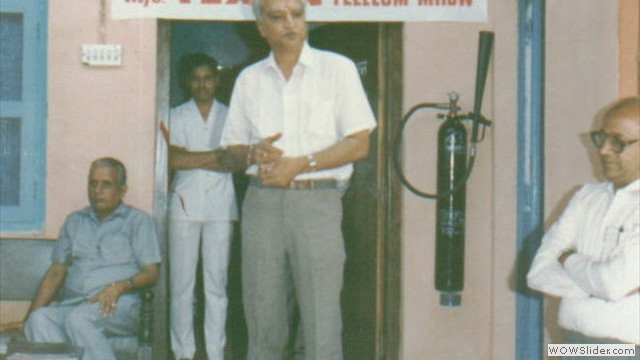
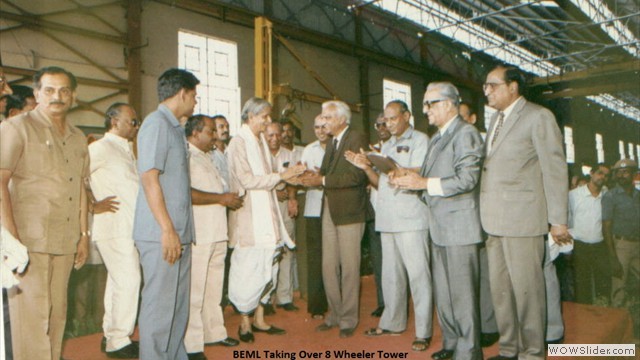

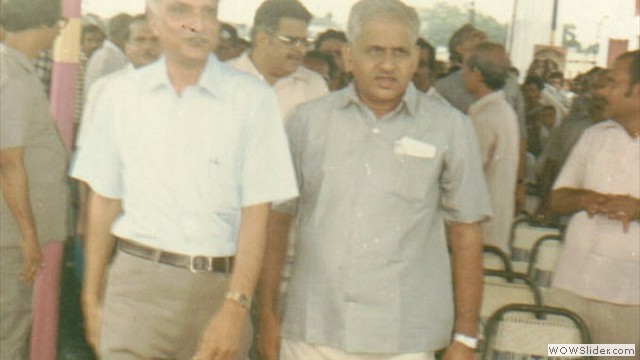

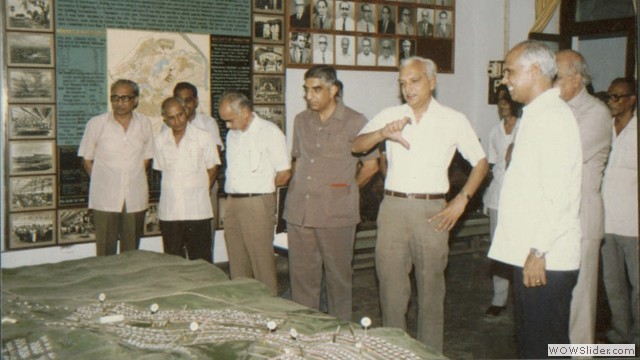
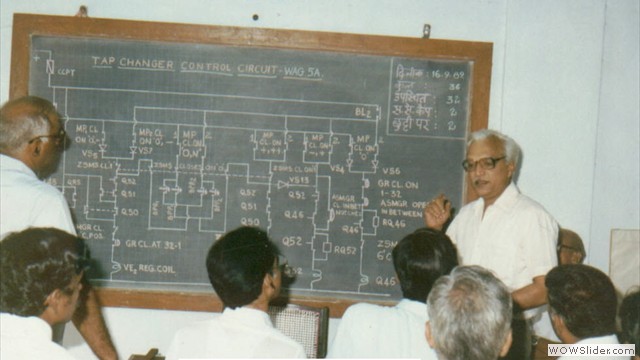
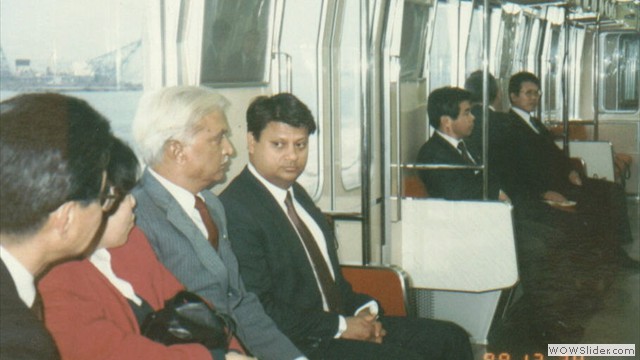
 1
1 2
2 3
3 4
4 5
5 6
6 7
7 8
8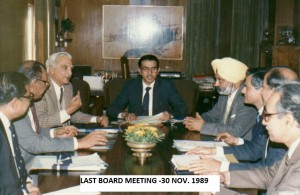
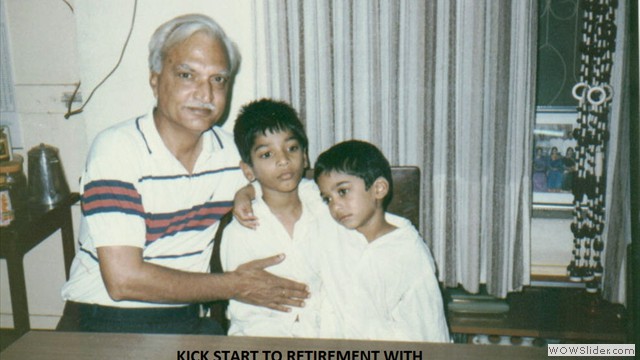

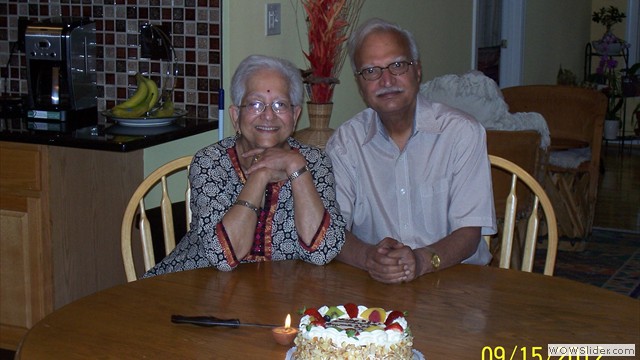
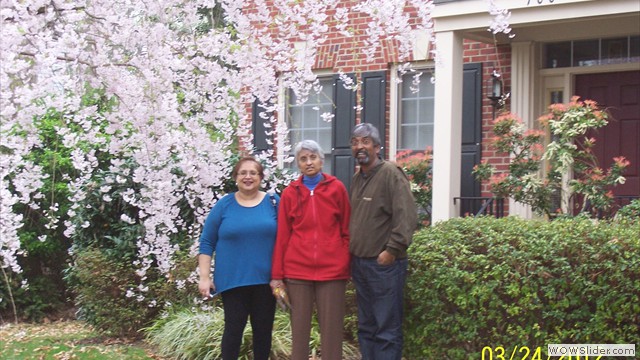

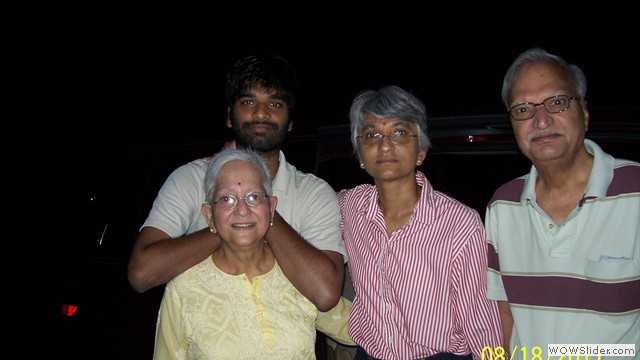
 1
1 2
2 3
3 4
4 5
5 6
6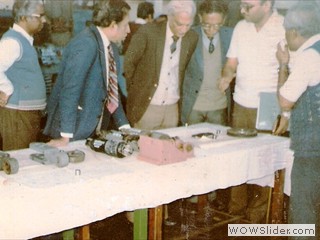
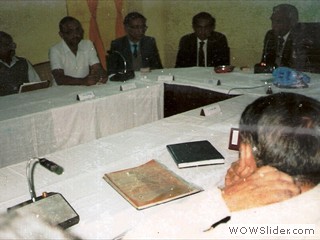
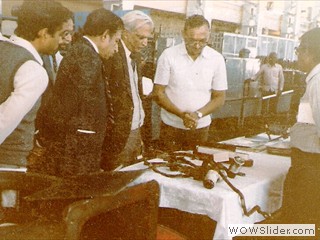
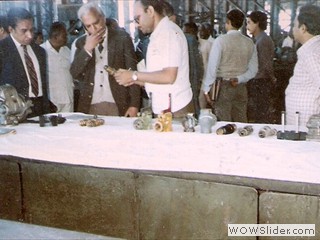
 1
1 2
2 3
3 4
4
Very informative interview and also the glimpses of evolution of today’s electric traction system through the eyes of the first ML are really interesting. Reading this interview is like a long pleasant train journey in the history of railway from past to present.
Thanks Devesh, in fact this is the purpose of posting interview of stalwarts railwayman to benefit newcomers.
Very informative!
VERY VERY NICE INTERACTION, YOUNG PROBATIONERS MAY BE GIVEN AN OPPURTUNITY TO READ THIS INTERVIEW POINTS AND ANSWERS.
THANK
NMRAO/IRSEE/PROFESSOR/LOCO (EX)
Thanks, dear. You may advise the new probationary officer to go through this interview of others.